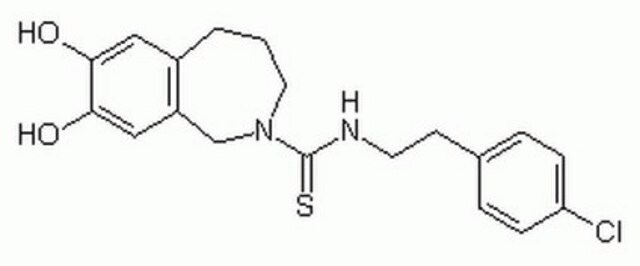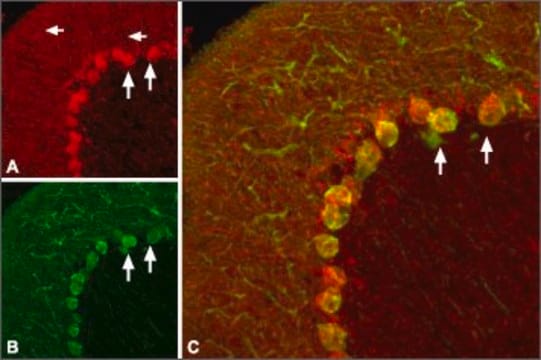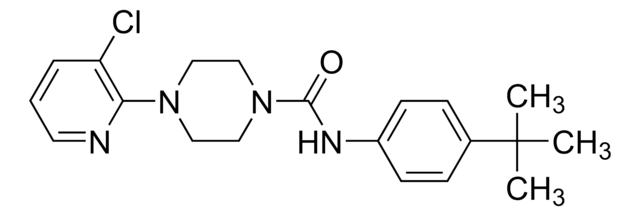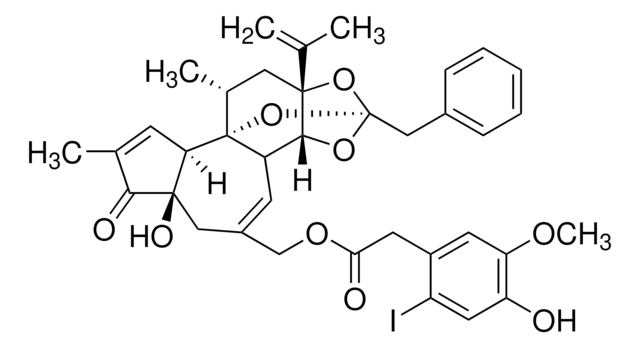C191
Capsazepine
≥98% (HPLC), solid, TRPV1 antagonist
Synonyme(s) :
N-[2-(4-Chlorophenyl)ethyl]-1,3,4,5-tetrahydro-7,8-dihydroxy-2H-2-benzazepine-2-carbothioamide
About This Item
Produits recommandés
product name
Capsazepine, ≥98% (HPLC), solid
Niveau de qualité
Pureté
≥98% (HPLC)
Forme
solid
Couleur
off-white
Solubilité
DMSO: >10 mg/mL, clear
Température de stockage
2-8°C
Chaîne SMILES
Oc1cc2CCCN(Cc2cc1O)C(=S)NCCc3ccc(Cl)cc3
InChI
1S/C19H21ClN2O2S/c20-16-5-3-13(4-6-16)7-8-21-19(25)22-9-1-2-14-10-17(23)18(24)11-15(14)12-22/h3-6,10-11,23-24H,1-2,7-9,12H2,(H,21,25)
Clé InChI
DRCMAZOSEIMCHM-UHFFFAOYSA-N
Informations sur le gène
human ... TRPV1(7442) , TRPV4(59341)
rat ... Trpv1(83810)
Vous recherchez des produits similaires ? Visite Guide de comparaison des produits
Application
- to study its effect on capsaicin induced extracellular signal-regulated kinase (ERK) phosphorylation
- to study the role of TRPV1 in central terminals on nociception in rats
- for functional characterization of the TRPV1 in bull spermatozoa
Actions biochimiques/physiologiques
Code de la classe de stockage
11 - Combustible Solids
Classe de danger pour l'eau (WGK)
WGK 3
Point d'éclair (°F)
Not applicable
Point d'éclair (°C)
Not applicable
Équipement de protection individuelle
Eyeshields, Gloves, type N95 (US)
Certificats d'analyse (COA)
Recherchez un Certificats d'analyse (COA) en saisissant le numéro de lot du produit. Les numéros de lot figurent sur l'étiquette du produit après les mots "Lot" ou "Batch".
Déjà en possession de ce produit ?
Retrouvez la documentation relative aux produits que vous avez récemment achetés dans la Bibliothèque de documents.
Les clients ont également consulté
Notre équipe de scientifiques dispose d'une expérience dans tous les secteurs de la recherche, notamment en sciences de la vie, science des matériaux, synthèse chimique, chromatographie, analyse et dans de nombreux autres domaines..
Contacter notre Service technique










